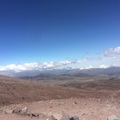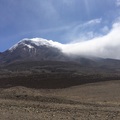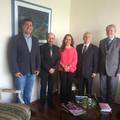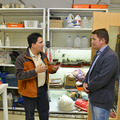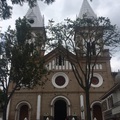09.08.2015.
Trujillo Chan Chan
The Kingdom of Chimú was a flourishing culture in the 9-15th century founded by the goddess Takaynamo due to the mythology. Its capital was Chan Chan (Sun Sun) built of adobe and earth, now part of the UNESCO world heritage. The city was on of the biggest in the Pre-Columbian Peru with its 200-250.000 inhabitants. The town had 9 palaces and uncountable religious, administrative and residential buildings, and water reservoirs. In the years of 1470 it was conquered by the Inca empire but they did not hurt its buildings and culture. 70 years later however the Spanish conquistadors saw no reason to let the Chimús continue its "pagan rituals". They were not destroying the place the manner they did with Cusco, building churches and palaces over the ruins, however the lack of maintenance for the adobe buildings was enough to be destroyed by nature during the hundreds of years. That's why in the 19th century several archeologists from all over the world came to study and preserve what remained.
That is why the only now visitable partially rebuilt palace is the "Tschudi", named after a Swiss archeologist from the 19th century. There palace was protected by 10-12 m high and 4-5 m wide walls. The Central Ceremonial Hall played a crucial role in the palace, it was decorated with symbols of the waves and animals of the see. It has several huge reception halls, uncountable small storage places (for food, weapon etc.), a lot of small and one huge water reservoir, which had probably the size of 148x48 m. It was used for ceremonial proposes and for sacrifices at the reflection the Full Moon in the reservoir, which was the admired centre of the Chimú beliefs.
The economy of the Chimú was based basically on the agriculture and fishing. They had developed a complex irrigation and water management techniques. For the fishing they had a fleet of small wooden boats. In the religion the Moon (and the Full Moon) played a central role, it was more appreciated than the Sun. In Chimú language the temples were called "sian", the house of the Moon.
After lunch we visited an "old" Peruvian family, which participated in the regional political and community life and in the fights for independence. Several members of the family in the 19th century and in the first half of the 20th century was regional governor. They showed me round in a 150 year old hacienda they are still living. It was just like a house of a Spanish noble family in Andalusia, full of portraits and old pictures of the ancestors, Spanish-Andalus style wall-ceramics (azulejo) and paintings. After we had dinner with the rector of the University of Cesar Vallejo.

